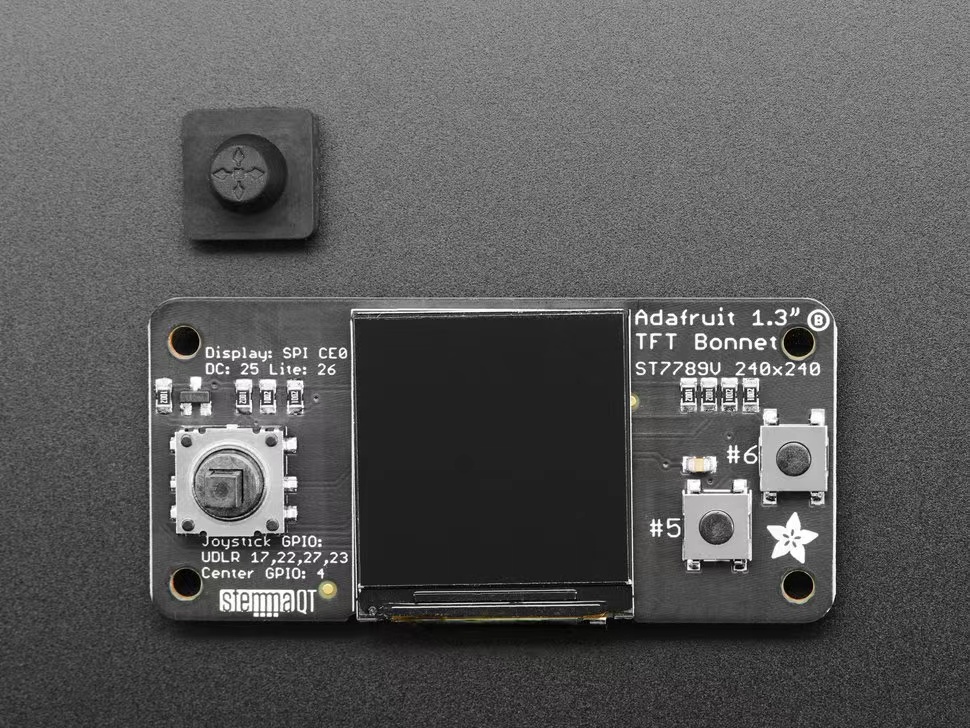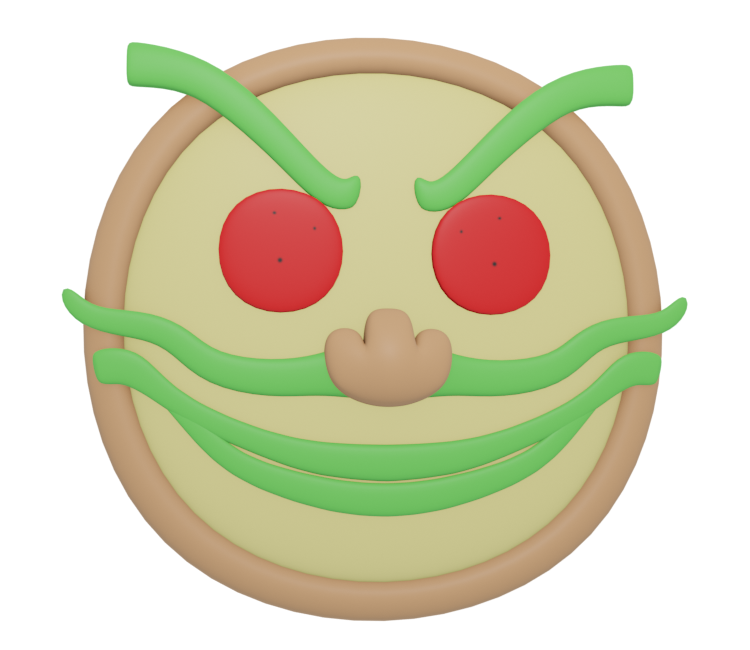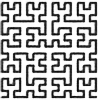PiCOnsole-8
UPDATE: Added a concept using pico-cad. not very specific but it was a lot of fun
===========
The purpose of this physical console is to:
1. Capture the retro-inspired essence of the Pico-8 software in a physical form, while re-imagining what it means to have a physical cartridge
2. Have old meet new with a sleek yet elegant 30x65mm body.
3. Reduce e-waste and create something that can be used as it is, or gut /hack it for different projects. This is achieved via the following concepts:
3.1. Doing away with the idea that a “physical cartridge” needs to be a separate part printed every time. However, it is important to capture the essence of a physical cartridge in a newly inspired way. The 33mm IPS 240x240p display on the front of the console has the sole purpose of displaying the art of the cart being played; not the game play itself. This is intentional because despite the console's small form-factor, it is meant to be plugged into a power source and a TV, just like in the old days.
(Later this display might be replaced with an e-ink screen, and the case re-formed as to be worn like a necklace. One could show everyone the cart you’re rocking! This is because e-ink doesn’t need power to maintain the image. This will also reduce power consumption.)
3.2. Although a micro USB port is present for the purpose of plugging in peripherals for development (such as a keyboard, mouse, controller, etc), a start button, d-pad, and two buttons are included to maximize real estate of the console. My idea was to reduce the need to buy an extra controller, further reducing the footprint of the hardware. Including a small control scheme also allows for the cartridge-art to be better noticed while in use.
3.3. Use of multi-purpose components. The console is powered by a Raspberry pi zero W and a 4-8gb micro SD. all the components can be completely repurposed (such as the screen, buttons, etc). Ideally the Pi will load pico-8 on boot with a very lite version of raspbian in order to reduce power consumption. A physical on/ off button will be included to initiate a safe-shutdown. The code used will also be visible for those who wish to repurpose the console as it is.
4. Intentional exclusion of a dedicated battery. This is to fully emulate that old-school feel and further reduce waste.
5. Quality DAC audio out for high quality music development or playing games in otherwise quite environments.
===========
What is done? What needs to be done?
1. The initial concept and measurements have been made, the DAC, screen, software, and hardware have been measured and initially chosen.
2. The final hardware is yet to be chosen: chances are I may polish the design and change out some parts to make it more beautiful.
3. The software is in early stages. I'm trying to get all the hardware to talk with each other correctly and have images displayed when I want them to be. I have a lot of learning to do here. But a lot of it seems very straightforward.
4. Creating the CAD concept file and the printable CAD file. This will likely be the last step, since it shouldn’t be too hard, but measurements might need to change. When I am back home on my regular computer, I will organize my notes into a nice image and diagram for you all to see (instead of my somewhat free-hand drawing I have uploaded).
===========
Why?
I love the idea of having a console that really captures the old school vibe, but is convenient and good looking. I’ve seen a lot of really cool consoles being made for pico-8 and a lot of people are really into having “realia” of the carts. However, although I think it’s cool, I keep feeling really bad about the amount of plastic and throw-away parts being created. When I had a NES, I really loved having cartridges poking out, adding to my imagination of the game I was playing. As time went on and I began traveling more, I found real cartridges to be inconvenient. I couldn't even see the art when plugged it in anymore (like with the 3DS or PSP)! I wanted old technology to meet new standards, much like how the pico-8 is a new "console" with old school restrictions.
===========
When?
I have no idea. I will do a little bit every day. I am a student with a full time job so I’m going to do my best, especially during weekends and holidays.
If you like this idea and you think I am too slow to put-out, steal all my work! Make it yourself! I’d love to see someone make this before I do and share the ideas they have.
===========
Open Source Hardware:
I’m using this term a little wrong, but I will share and document everything as it comes along. This includes CAD files and all the software I come up with. Ideally, this will be something you can make at home or hack to be better. It’s a project of love.
===========
Update #1: 1/28/2022
I made a rough concept in PicoCAD! I put it at the top of this page. Further schematics and CAD progress will be added as I go on.
Update #2: 1/28/2022
I spent some time really looking at the kinds of hardware I want, and the end-result. Got my components picked. More importantly, I've come up with a timeline:
1. Picking out the hardware --FINISHED--
2. Next will be getting the breadboard + components and piecing everything together. I plan on using a EEPROM CAT24C32 to configure the buttons. Although my component list is solid (and well documented) right now, I'm toying with the idea of what kind of directional pad to use (either the traditional d-pad, or using an analogue stick similar to the PSP system. Results will be determined by ease/availability.) Thankfully living in China has the perks of everything being easy to get.
3. Software V, 1.0 This is essentially getting everything hooked up and working. Not working 100% how I want it to work, but working as in the screen is synched with the pi, buttons do what they need to, etc.
4. Using KiCAD to create a PiHAT. I want this project to be very slim, so streamlining everything into a circuit board is important for the final design. There will be a lot of design choices, like most comfortable place to put the buttons (I kind of like the way they are placed when the games are played on the Iphone 13 Mini).
5. Software 2.0 This is getting my software to do everything I want it to do perfectly: the machine boots into SPLORE, the screen now serves the purpose of only displaying cartridge art (or working standalone if not hooked into an HDMI), buttons aren't wonky. basically a functional machine.
6. Print the circuit board and soldier. At this point everything should be in the final stages. Further testing will ensue.
7. Design the case in CAD and get it 3D printed. This will take some time, but it's important to do last since I will know how to house everything. I have initial written schematics right now but I will need to do a final measurement when paper becomes reality. Also needs some art direction and the like. Choosing materials and colors. Not too worried about this yet though.
8. Put it all together, check all documentation, make it available. The heart of this project is to make it available to anyone who will want to do it themselves. I don't have a real desire to go around selling my work. Too much effort. I'd rather make something cool and then let others take the wheel. Chances are if I document it well and easy enough, even a novice could do something really cool with it.
Update #3: 1/29/2022
After a while, I decided I wanted more of an x/y input nub to save me a headache of cutting out and measuring a d-pad. Then I came across the PSP1000 nub. I thought would be perfect, but then I figured I could reduce to a cheaper smaller nub for use. As a result I came across this:

Basically the thing I want to make, but not 100% the same as mine. Okay, bit of a letdown, but this is my learning project dammit! So I will still work on that. In the meantime, I wondered to myself if it would be better to do away with all unnecessary buttons. stick to the roots of a home console, and not a gameboy. after all, why go through all the trouble to make a pico-8 Arduboy?
I have made a minor re-design. It's an early concept. It will save me a little time and money on version 1, while I work out the kinks for the gameboy like device. Possibly, I could make this a little clam-shell rectangular prism that could easily fit in one's pocket. Only a power button and screen (and outputs of course). make it really minimalistic - which would give me a chance to really stress the art designs for it after. Here is my sketch up so far. let's see where it goes!

Clamshell design, @stealth_dorf ? I'm in ! You might add 2-more buttons, auto-fire for 🅾️ and ❎.
Color E-Ink is pretty advanced technology, even today.

@dw817
Color e-ink crossed my mind, but maybe for an even more futuristic update. For now I'll do LCD but after the initial design is done, I may go for a good B&W screen first. I tried loading up some carts on my B&W screen to see what it would look like and they do look really cool, although not colorful (I'd imagine they will look great on a color screen, but those are still way too expensive for me to consider.)
It's not a clam-shell design, but now that you mention it, having a clam-shell case could be really great - maybe something like what the Play-Date by Panic is doing. So it can be packed for travel without scratching.

You may find absolute ease in using the existing shell of a Gameboy Advance SP, @stealth_dorf. No need to create a custom layout or hardware design. GBA-SP is pretty old technology. You may find a way to mass produce them for pennies on the dollar.
As mentioned if you can make one of these that has a great GUI like an offline version of SPLORE and plays all existing and future Pico-8 carts from a single slot insert that can house a memory insert such as a 2gb or 4gb SD card. I'm willing to pay an excess of $100 for such a device fully assembled and ready to run right out of the box.

Likely the SD card would be inserted through a false sturdy cartridge for the GBA-SP in the back. Where that cartridge is glued in, won't come out, but has space for a slot for any SD card. Perhaps a slot would be cut and centered and above the cartridge itself with easy insert and removal of the SD card.


It’s not really what I’m going for conceptually. It’s a cool idea I’m sure one could pull off with similar technical ability, but I’m not looking to make a gameboy

Update incoming. From now on I will write my updates at the bottom, unless it is a major change in artistic direction, then I will make a note for it being at the top of the page.

Nice project! Extra-Mega-Bonus-Points for using pico-cad ;)

Good luck with your project. I hope more people make their own consoles.

Thanks! Assuming it goes well, I’ll post all the documentation! Right now I’m working on the software. Bit since I’m away from
Home. Trying to learn enough about micropython to make the code sizes smaller since the screen is more or less acting like a “micro controller “ but the other thing I’m trying to figure out is how to make it so when pico-8 loads a cart, the code will notice the cart being loaded/downloaded then have that image load to the screen.

I took a few years to travel and I'm back at it now. Working on the software and learning how to use CAD for 3D printing. It's a slow process since I'm a bit busy these days. If I get the rest of it put together, I might ask someone who is better at programming to help me with the screen-part.
a big challenge I'm struggling with now is loading times. It takes me almost 30 seconds for the pi to boot into pico-8.

Yayyy!!!!
Once My Pizza Tower Game Release's Demo Here: https://www.lexaloffle.com/bbs/?tid=143591
Pizza Tower In The 80's / 90's :)

I have a question : why is the cross on the right ?
This only makes sense if you are left handed so you can mash buttons quicker with your main hand. (On the Atari Lynx, you can flip the screen image and play with the cross on the right).
[Please log in to post a comment]













